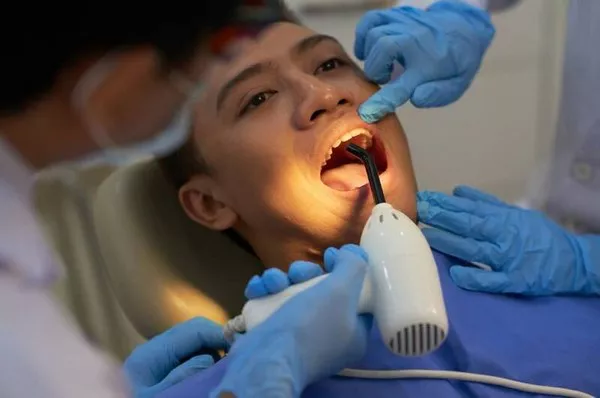Dental procedures, whether it’s a routine filling or a more extensive tooth extraction, often evoke anxiety and concern about potential pain. In this article, we will explore the pain factors associated with both tooth extractions and fillings, shedding light on what patients can expect during these common dental interventions.
1. Introduction
Dental care plays a crucial role in maintaining oral health, and various procedures aim to address issues ranging from cavities to more severe dental problems. Among the concerns that patients frequently express is the fear of pain during dental treatments, particularly when faced with the choice between a tooth extraction and a dental filling.
2. Understanding Tooth Extractions
2.1. Reasons for Tooth Extractions
Tooth extractions are typically performed when a tooth is extensively damaged, decayed, or poses a threat to surrounding teeth due to infection or crowding. The removal of a tooth may be necessary to prevent further complications and preserve overall oral health.
2.2. The Process of Tooth Extraction
Local Anesthesia: Before the extraction, the dentist administers local anesthesia to numb the area around the tooth. This ensures that the patient experiences minimal discomfort during the procedure.
Loosening and Extraction: The dentist uses specialized instruments to loosen the tooth within its socket. Once sufficiently loosened, the tooth is carefully extracted from the gums.
Post-Extraction Care: After extraction, the dentist may provide post-operative care instructions, including recommendations for pain management and the prevention of complications like dry socket.
3. Pain Perception in Tooth Extractions
3.1. During the Procedure
The use of local anesthesia significantly minimizes pain during the tooth extraction process. Patients typically feel pressure and some sensations but should not experience sharp pain.
3.2. Post-Extraction Discomfort
Immediate Discomfort: Some patients may experience immediate discomfort after the extraction, primarily due to the residual effects of anesthesia wearing off.
Potential for Swelling and Pain: Swelling and pain are common side effects after a tooth extraction. However, these symptoms are usually manageable with prescribed pain medications and follow-up care.
4. Understanding Dental Fillings
4.1. Reasons for Dental Fillings
Dental fillings are employed to restore teeth affected by cavities or minor damage. The procedure involves removing the decayed portion of the tooth and filling the cavity with a restorative material, such as composite resin.
4.2. The Process of Dental Fillings
Diagnosis and Preparation: The dentist diagnoses the presence of a cavity through examination and X-rays. The affected tooth is then prepared for the filling by removing the decayed material.
Application of Filling Material: The chosen filling material, often composite resin, is applied in layers and hardened using a special light. The dentist sculpts and shapes the material to ensure proper function and aesthetics.
Final Polishing: After shaping the filling, the dentist performs a final polishing to create a smooth surface and enhance the natural appearance.
5. Pain Perception in Dental Fillings
5.1. During the Procedure
Local Anesthesia: Similar to tooth extractions, dental fillings involve the administration of local anesthesia to numb the tooth and surrounding tissues.
Minimal Discomfort: During the procedure, patients may feel minimal discomfort, such as pressure or vibration, but sharp pain should be absent.
5.2. Post-Filling Discomfort
Sensitivity: After the filling procedure, some patients may experience sensitivity to hot or cold temperatures. This sensitivity is often temporary and diminishes over time.
Pain Management: Over-the-counter pain relievers are usually sufficient to manage any post-filling discomfort. The dentist may also recommend specific care instructions to minimize sensitivity.
6. Factors Influencing Pain Perception
6.1. Individual Pain Threshold
Individual pain thresholds vary, influencing how patients perceive and experience discomfort during dental procedures. Factors such as anxiety and fear can also impact pain perception.
6.2. Complexity of the Procedure
The complexity of the dental procedure plays a role in pain perception. While both extractions and fillings can be performed with minimal discomfort, more intricate procedures may require additional measures for pain management.
Conclusion: Making Informed Decisions for Dental Care
In the comparison between tooth extractions and dental fillings, it is crucial to recognize that both procedures aim to address specific dental issues while prioritizing patient comfort. The use of local anesthesia significantly reduces pain during the procedures, and any post-operative discomfort is usually manageable with prescribed medications and proper care.
Ultimately, the perception of pain varies from person to person, and individual factors such as anxiety and pain tolerance play a significant role. When faced with the decision between a tooth extraction and a filling, patients should consult with their dentist to understand the specifics of their case and make an informed decision that aligns with their oral health needs.
Choosing the right dental procedure is a collaborative decision between the patient and the dentist, taking into consideration factors such as the severity of the dental issue, the complexity of the procedure, and the individual’s pain tolerance. With advancements in dental technology and pain management techniques, both tooth extractions and fillings can be performed with minimal discomfort, contributing to overall oral health and well-being.
What Not To Do After Tooth Filling
Tooth Filling Fell Out What To Do



























